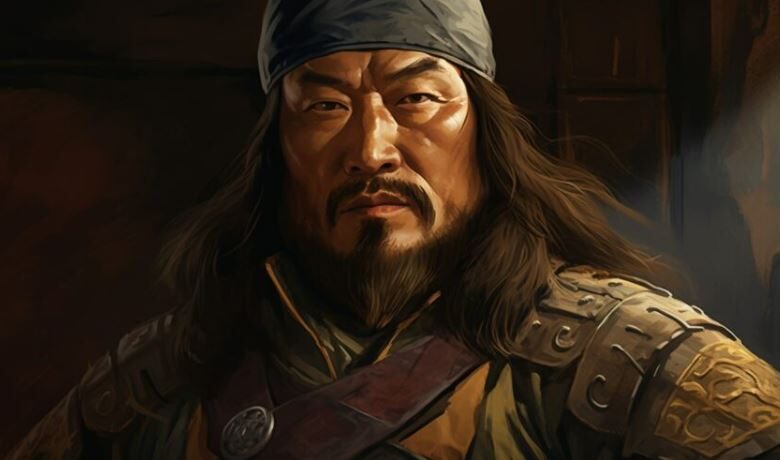
Genghis Khan Net Worth The Wealth of History Greatest Conqueror
Genghis Khan, the founder of the Mongol Empire, is one of the most legendary figures in history. Known for his unparalleled conquests, military genius, and visionary leadership, he united the nomadic tribes of the Mongolian plateau and forged the largest contiguous empire the world has ever seen. Beyond his conquests, Genghis Khan’s wealth and resources have become a subject of fascination for historians and enthusiasts alike. But how do we quantify the net worth of someone who ruled over vast lands and resources rather than a modern monetary system?
In this article, we will explore the immense wealth of Genghis Khan, how it was amassed, and why it remains unique in history.
Who Was Genghis Khan?
Genghis Khan, born as Temüjin around 1162, rose from humble beginnings in the harsh steppes of Mongolia. His early life was marked by hardship—his father was assassinated, and his family was left destitute. Despite these challenges, Temüjin grew into a formidable leader, uniting the fractious Mongol tribes under his banner through a combination of diplomacy, alliances, and sheer force.
In 1206, he declared himself Genghis Khan, meaning “Universal Ruler,” and set his sights on expanding his domain. Over the next two decades, he led his armies across Asia, the Middle East, and Eastern Europe, conquering kingdoms, empires, and city-states.
The Wealth of an Empire
1. Land and Territories
At its height, the Mongol Empire spanned approximately 9 million square miles, covering modern-day China, Mongolia, Korea, Central Asia, parts of the Middle East, and Eastern Europe. Genghis Khan’s control over such vast territories made him incredibly wealthy—not in the conventional sense of cash or gold, but in access to land, resources, and human capital.
Land ownership has historically been one of the primary indicators of wealth, and in this regard, Genghis Khan surpassed any other ruler in history. His empire facilitated the movement of goods, ideas, and cultures along the Silk Road, further boosting the prosperity of his realm.
2. Trade and Commerce
Under Genghis Khan’s rule, the Mongol Empire became a hub for international trade. By securing the Silk Road, he ensured the safe passage of merchants and traders, creating a thriving economic network that linked the East and the West.
This control over trade routes generated enormous wealth for the empire. Goods like silk, spices, precious metals, and textiles flowed freely, enriching both the empire and the regions under its rule.
3. Tribute and Loot
As Genghis Khan’s armies expanded the empire, they brought immense wealth in the form of tribute and loot. Conquered cities and kingdoms were required to pay heavy taxes or tributes to avoid destruction. Those that resisted were often sacked, and their treasures—gold, silver, jewels, and other valuables—were seized.
The plunder amassed from cities like Bukhara, Samarkand, and Nishapur added to the empire’s wealth. It’s estimated that Genghis Khan’s campaigns resulted in the acquisition of untold riches.
4. Agricultural and Natural Resources
The vast lands under Genghis Khan’s control were rich in natural resources, including fertile agricultural land, forests, and minerals. These resources provided a steady stream of wealth, supporting both the military campaigns and the livelihoods of his people.
Agricultural productivity, particularly in regions like China, contributed significantly to the empire’s wealth. The integration of various economies under one rule created an unprecedented flow of resources.
Estimating Genghis Khan’s Net Worth
Attempting to calculate Genghis Khan’s net worth in modern terms is challenging due to the lack of a unified monetary system during his time and the sheer scale of his wealth. However, some historians and economists have speculated that if his wealth were converted to today’s standards, it would be unparalleled.
Here are some factors to consider:
- Land Ownership: With the Mongol Empire covering 16% of the world’s land area, Genghis Khan’s control over such vast territory would place his net worth in the hundreds of trillions of dollars if valued at current real estate prices.
- Trade Revenue: The economic prosperity generated by the Silk Road under his rule was immense, rivaling the GDP of many modern nations.
- Loot and Tribute: The wealth amassed from conquered cities and regions was staggering, though much of it was redistributed to his generals and soldiers.
Some estimates suggest that Genghis Khan’s wealth, in today’s terms, could exceed $100 trillion. This would make him the wealthiest individual in history, surpassing figures like Mansa Musa, John D. Rockefeller, and Jeff Bezos.
Why Genghis Khan Had No Personal Wealth
Despite the unimaginable riches under his control, Genghis Khan is famously known for living a relatively modest life. He avoided extravagance, choosing to dress simply and eat the same food as his soldiers. His focus was on the success and expansion of the empire rather than personal luxury.
Unlike modern billionaires who accumulate wealth for personal use, Genghis Khan viewed wealth as a means to sustain his empire and reward loyalty. He distributed much of the loot and resources among his generals, soldiers, and the people under his rule, ensuring their allegiance and prosperity.
The Legacy of Genghis Khan’s Wealth
Genghis Khan’s influence and wealth extended far beyond his lifetime. After his death in 1227, the empire continued to expand under his successors, eventually dividing into four khanates. The Mongol Empire’s legacy shaped the economic, cultural, and political landscapes of Eurasia for centuries.
1. The Pax Mongolica
The period of peace and stability known as the Pax Mongolica facilitated trade, cultural exchange, and technological advancements. This era of prosperity owed much to the foundations laid by Genghis Khan.
2. Lasting Economic Impact
The wealth generated under Genghis Khan’s rule influenced the economies of regions across Asia and Europe. The integration of markets and the flow of goods created a global economy long before the modern era.
Genghis Khan vs. Modern Billionaires
When comparing Genghis Khan’s wealth to modern billionaires, it’s essential to consider the context. Unlike contemporary wealth, which is measured in monetary terms and stored in assets or investments, Genghis Khan’s wealth was tied to land, resources, and human capital.
If adjusted for inflation and modern valuation, Genghis Khan’s wealth dwarfs that of today’s richest individuals. However, his focus was not on personal enrichment but on building and sustaining an empire. This distinction sets him apart from modern wealth icons.
Genghis Khan’s net worth, though immeasurable by today’s standards, remains a fascinating subject of historical speculation. As the ruler of the largest contiguous empire in history, his wealth was unparalleled, rooted in land, resources, and the economic power of his vast domain.
What makes Genghis Khan truly remarkable is his vision and leadership. He used his wealth not for personal luxury but to create an empire that reshaped the world. His legacy is a testament to the power of ambition, strategy, and unity—a story that continues to inspire and intrigue generations.
While we may never know the exact value of his wealth, one thing is certain: Genghis Khan’s influence and achievements far surpass the limits of monetary measurement.



